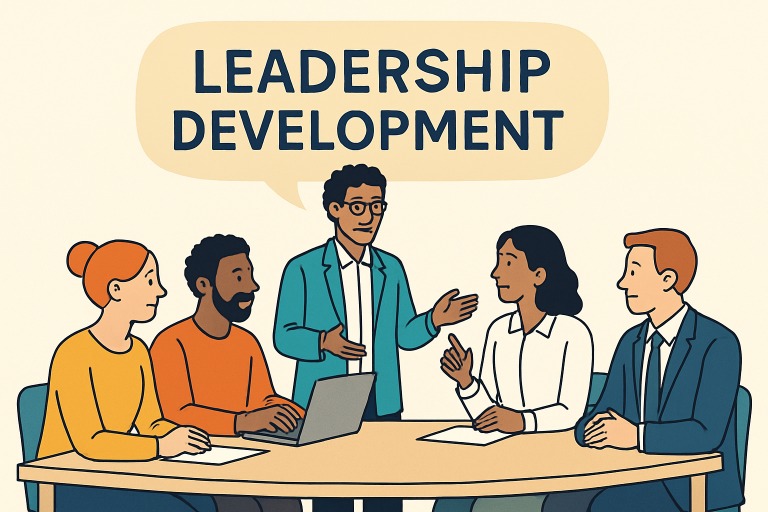The Role of Leadership in Organizational Success
Organizational achievement hinges on the strength and vision of its leaders. Exceptional leadership is the linchpin for implementing strategy, managing teams, and cultivating an adaptive culture. The qualities embodied by influential leaders—such as emotional intelligence, decisiveness, and integrity—are often reflected throughout the organization. In fact, companies supported by strong leadership are significantly more likely to outperform competitors—a recent study found these organizations were up to 3.5 times more likely to surpass others in their field. Leadership’s influence extends to articulating a sense of purpose, aligning diverse individuals around shared goals, and swiftly responding to the challenges presented by an evolving market. For leadership capabilities to translate into measurable business performance, organizations must prioritize structured development efforts such as executive coaching early and often in their talent pipeline. By fostering leaders at every level, companies set a solid foundation for success and resilience in changing business landscapes.
Embedding leadership development into the organization’s culture leads to a ripple effect across all business areas. Leaders set the tone for behavior and expectations and serve as role models for openness and accountability. When leadership demonstrates adaptability and encourages risk-taking, it inspires employees to bring their best ideas and take ownership of their work. This sense of psychological safety is a fundamental driver of innovation and collaborative success, empowering teams to tackle complex problems confidently.
Benefits of Leadership Development Programs
Companies that champion leadership training and development programs find themselves unlocking a series of decisive advantages. One of the most important is enhanced employee engagement. When employees see clear opportunities for advancement and the support to grow, morale and loyalty increase. Employees who feel invested are more likely to stay with the company, acting as advocates for both its culture and brand. For example, organizations prioritizing leadership skill-building have recorded a 21% increase in profitability and a 17% boost in productivity. Leadership development programs can also act as a magnet for top talent, who associate robust training opportunities with promising career prospects and strong organizational values.
This focus on continuous development also significantly improves retention rates. As a strong culture of internal growth emerges, employees view their future within the company with clarity and purpose, reducing costly turnover. Turnover can be particularly expensive, factoring in recruiting, onboarding, and lost productivity—yet it’s often mitigated by effective development programs that connect career progression to company success. Furthermore, with the presence of inspirational and supportive leaders, innovation flourishes. Employees are encouraged to suggest novel solutions, experiment with new ideas, and challenge the status quo, driving the organization to become a pioneer in its industry. These programs also contribute to better cross-functional collaboration and communication, as leaders become adept at breaking down silos and building bridges across departments.
Implementing Scalable Leadership Development
Successfully scaling leadership development within a growing organization requires a multifaceted approach. One essential strategy is making learning accessible, from first-time managers to senior executives. A primary method is integrating small-group learning—blending the excitement and shared energy of larger cohorts with the safety and intimacy of breakout groups allows participants to learn collaboratively while gaining the confidence to apply new skills. In these environments, learners are encouraged to share challenges, role-play difficult scenarios, and receive peer feedback, building skills and mutual trust and camaraderie. These programs can be delivered in-person or in virtual settings, maximizing accessibility and reach while maintaining high levels of personalization. Technology-enabled learning platforms also allow on-demand resources, discussion forums, and mentorship opportunities, extending development support beyond the classroom.
Measuring the Impact of Leadership Development
Tracking progress with robust metrics is essential to ensure leadership development delivers tangible organizational value. The success of these programs isn’t just anecdotal; data-driven insights are critical to understanding their true impact. Commonly used data points include employee engagement scores, turnover rates, and indices reflecting the innovation rate or market speed. Reviewing these indicators illuminates gaps, highlights strengths, and guides program adjustments for ongoing improvement. Dashboards and analytics tools make it easier to visualize changes over time, providing leaders and HR professionals with actionable intelligence on where to allocate resources.
Beyond quantitative metrics, qualitative feedback from managers, peers, and direct reports also reveals the real-time effects of leadership programs. Open forums, exit interviews, and post-training surveys give employees a voice in refining development offerings and surfacing emerging needs. Success stories, testimonials, and the upward mobility of program graduates further confirm the outcomes and provide compelling examples for future cohorts. Leadership development should be seen as an evolving organizational journey, with lessons learned and best practices continually surfacing from the voices and experiences of those participating. According to Gallup, organizations with effective leadership pipelines see improved financial performance, stronger talent attraction, and more resilient, adaptable teams.
Final Thoughts
Strong leadership is the engine that drives growth and sets organizations apart in a crowded marketplace. Leaders with a blend of vision, empathy, and operational acumen can unify teams and confidently navigate uncertainty. Through intentional investment in scalable and customized leadership development initiatives, businesses can empower employees, accelerate innovation, and create an enduring impact on their industries. These initiatives are not a one-time event but an ongoing priority for organizations intent on thriving today and well into the future. Organizations that embrace continuous learning and forward-thinking leadership cultivate a culture where potential is realized, and sustainable success becomes the standard rather than the exception. In an era defined by disruption and rapid change, those who prioritize the systematic growth of their leaders will continue to rise to the top.





Leave a Reply